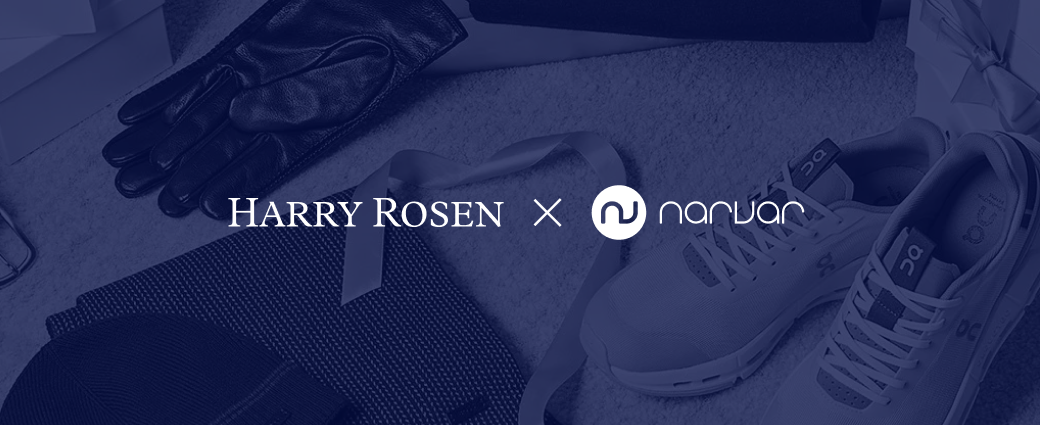
AI-powered delivery date estimates to boost conversion
Give shoppers peace of mind and protect and grow your bottom line
Personalized tracking experiences to build brand loyalty
Returns and exchanges management to mitigate fraud and reward best customers
Proactive communication to drive customer lifetime value
Delivery claim management to tackle fraud and build trust
3 Steps to Eliminate WISMO and WISMR
%20(31).webp)
Did you know the average WISMO or WISMR inquiry can cost up to $6? Or that each inquiry chips away at a customer’s lifetime value with the retailer by reducing the likelihood of a subsequent purchase? Preempting WISMO and WISMR eliminates stress for the customer and revenue waste for the retailer. Here are three proven, affordable steps retailers like you can take to mitigate or eliminate WISMO and WISMR.
(Looking for even more detail about returns and reverse logistics, check out our ebook How to Optimize Reverse Logistics in Retail.)
#1: Set Customer Expectations
The first step to reducing WISMO and WISMR?—Clearly communicate what will (should) happen during the moment a customer clicks “buy.” That means detailing policies (e.g., return policies) across:
- The retailer website
- In the order confirmation email
- Throughout the branded tracking pages
Pre-purchase expectations
“Shipping” and “Return” policy links are frequently available in the footer of a retailer’s website, but that may not be enough.
As a best practice, retailers like Neiman Marcus and Everlane include basic shipping and returns information on each product page, along with links to their complete shipping and return policy pages. Adding the links to the full policies on a product page makes it easier for first-time customers to feel more comfortable shopping with a new brand.
Shipping and return information on a product page can be as simple as “Free 2-day shipping on purchases over $100,” or “Most items may be returned within 30 days of purchase.” If there are extenuating conditions that supersede standard shipping or return policies (e.g., backordered items, final sale items, etc.) the retailer should prominently display that information on the product page.
(For example, J. Crew includes its final sale disclaimers above the “Add to Bag” button a product page, while Banana Republic posts a “Final Sale” tag next to the price.)
When an item is backordered or only available for pre-order, the product page should state when the retailer expects to ship the item. GAP shares that information in two ways:
- A pop-up message indicating the estimated shipment date when the customer hovers over their size in a desktop browser
- An estimated shipment date text box above the “Add to Bag” button.
Saks Fifth Avenue takes a slightly different approach, positioning items that are not ready to ship as “Pre-Order” items. On its product assortment pages, Saks displays a “Pre-Order” button instead of the usual “Add to Bag” button, and in the product page, it displays both an “Expected ship date no later than” disclaimer and the “Pre-Order” button instead of an “Add to Bag” button.
Post-purchase expectations
After the customer clicks the “buy” button, they should receive confirmation and tracking emails with the relevant fulfillment and return information for their order:
- When the order will be delivered
- How long it’s returnable
- Return instructions
If an item is backordered, the confirmation should indicate when it is expected to ship, and if a multi-item order will be shipped in separate packages.
For some customers, email updates are enough. Other customers demand more visibility, which retailers can deliver through branded tracking pages.
Branded tracking pages allow retailers to retain control over their post-purchase experience. Instead of outsourcing customers to the carrier’s tracking page, retailers can keep customers “in-house”, and continue exposing them to valuable, branded marketing.
(One major department store using branded tracking pages reported a 9% CTR from the branded page back to the retailer’s website.)
Branded tracking pages give the customer information about where an order is in the fulfillment or return process, (i.e. being processed, in transit, etc.), and its precise location in transit.
Post-purchase communications and tracking pages are also a smart place to include order cancellation instructions. No retailer wants to lose a sale, but it’s cheaper to void the sale entirely than to facilitate a return and field a WISMR call. If a customer changes their mind before an order is shipped, convenient access to a cancellation link or instructions saves everyone time and money.
#2: Use predictive intelligence for updates
While logistics obstacles in factories, ports, and last-mile delivery are usually at fault for backorders and late deliveries, retailers are the ones who get blamed (and inundated with expensive WISMO calls). Retailers can help themselves avoid some of the blame by obtaining greater insight into their supply chain, and then pair that insight with proactive customer updates.
As an example, Narvar Monitor provides customized, 360-degree views of a retailer’s operational structure. Through its dashboard, retailers can access real-time data about overall delivery timeliness, forecasted carrier delays, the average transit time for delivered packages, and more.
Instead of vague statements about delivery delays due to inclimate weather or seasonal shopping spikes, Narvar Monitor helps retailers give shoppers precise details based on real-time data—details that lead to better buying decisions and fewer WISMO inquiries.
#3: Proactive email and text alerts
The best practice in retail is to notify the customer when confirming the order, shipping the order, and delivering the order. Both the confirmation and shipping updates should include the predicted delivery date. The delivery notification is important in light of the growing number of package thefts: In 2021, 64% of Americans were victims of “porch pirates.”
If the transaction progresses as planned, those three emails or texts are sufficient to ensure a good customer experience. If there are delays or the package will arrive early, however, the retailer should update the customer immediately. Even good news warrants an update, as the customer may need to make arrangements to receive the package.
Another reason why retailers should send delivery alerts?
It’s an opportunity to solicit feedback and product reviews, which may persuade other customers to make a purchase.
WISMO No More
“Where is my order?” is the #1 question in ecommerce, accounting for approximately 15% of customer service calls. Think about how much money your business could save by reducing inbound customer service queries by 15%. Investing in supply chain visibility and customer updates now can yield higher profits in the long run.
Schedule a demo today to learn how the right tools can help you eliminate WISMO and WISMR.
























